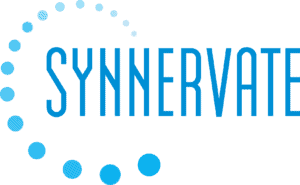Why Holacracy?
A management framework with new rules of engagement. What’s in it for you?
Get out of the weeds – focus on the business
When a company grows, founders often get stuck in operations, losing sight of the big picture. Holacracy helps you quickly identify and delegate tasks effectively, so you can refocus on strategic goals.
Delegate within clear boundaries
Delegation is challenging. Holacracy simplifies it by clearly defining roles and responsibilities, allowing you to delegate confidently while maintaining essential control.
Give managers a framework to lead without micromanaging
Managers carry heavy responsibilities. Holacracy provides a clear framework, helping managers lead effectively without micromanaging or becoming overly distant.
Full transparency into who is responsible for what
Who updates marketing copy? Who manages social media? Holacracy’s transparent governance clarifies responsibilities, saving valuable time.
Autonomy to do your job with clear authority within defined boundaries
Tasked with a project but unsure of your limits? Holacracy clarifies your authority and boundaries, empowering you to act decisively and efficiently.
A clear process to efficiently change anything
Have an improvement idea but struggling with approval? Holacracy offers a structured, efficient process to propose changes without requiring manager approval or team consensus.
Upgrade Your Management In 5 Building Blocks
Holacracy is a modular management framework packaged for faster deployment.
Clear role structure
Holacracy organizes work into clear roles with explicit responsibilities and authority. Employees can hold multiple roles tailored to their strengths—improving resource allocation, boosting motivation, and clarifying collaboration.
This builds a dynamic structure that reflects current needs and evolves easily as the organization changes.
Rules of cooperation
Set reliable cooperation rules, defining transparency, prioritization, and request processing to streamline daily collaboration.
Efficient meetings
A structured meeting process designed to finish early, eliminating rambling discussions and unnecessary consensus-seeking.
Distribute authority
Empower employees with clear boundaries, enabling effective leadership and systematic delegation within agreed authority.
Governance process
Team members propose role changes through a governance process, ensuring the organization adapts to changing conditions.
explore and adopt Holacracy
Our global network of Holacracy Coaches is here to support you. They offer a range of services to support your Holacracy adoption, public trainings, and introductory events for your team to try the Holacracy framework.
Beyond Holacracy coaching, we maintain a growing network of service providers offering Holacracy-compatible services. From software apps to other types of consulting services, you get the guarantee that they will integrate with your Holacracy practice. See All Services
FAQ
Holacracy differs from traditional management in several ways:
- Distributed decision-making: In traditional management, decision-making is hierarchical. Higher-ups having the final say and can overrule subordinates. Holacracy, on the other hand, distributes decision-making authority among roles, granting them autonomy to make decisions within their scope of work. Constraints can be set, but only through a structured process. There is no “boss card” that allows anyone to trump another’s decision, ensuring more local decision-making.
- Dynamic roles: Holacracy replaces traditional job titles with “roles,” which are defined collectively through a governance process at the team level. These roles can be updated and modified as often as needed to adapt to the needs of the organization.
- Governance process: Holacracy has a unique governance process that empowers employees to propose changes to the organization’s structure and processes. These proposals are evaluated and approved by the whole team, rather than by a single manager.
- Holacracy doesn’t restrict people to their job titles. Instead, authority and responsibilities are assigned to roles within the organization. Each person may hold different roles across multiple teams. This means that people can use their skills and abilities in a variety of contexts, and the organization can benefit from their diverse talents.
These are just a few of the many differences. You can discover more about how Holacracy operates on How It Works or review examples of Holacracy Use Cases.
While we cannot track all organizations that use the Holacracy constitution, some choose to make their practice public or share it with us directly. These organizations are added to a list that we maintain: Which Organizations Use Holacracy?
When used correctly, there are several benefits of using Holacracy in an organization:
- Improved agility and responsiveness: By distributing decision-making authority to different roles, Holacracy allows for quicker and more agile decision-making, which can help organizations respond faster to changing market conditions.
- Enhanced employee engagement: With Holacracy, employees have more autonomy and are empowered to make decisions that impact their work, which can lead to greater job satisfaction and engagement.
- Greater clarity and accountability: The use of clear roles, accountabilities, and governance processes in Holacracy can help clarify expectations and increase accountability throughout the organization.
- Flexibility and adaptability: Holacracy’s focus on roles rather than job titles allows for more flexibility in job assignments and greater adaptability to changes in the organization’s needs.
There are many ways Holacracy may be beneficial to you in your specific context. Your can find some use-cases here: Holacracy Use Cases.
It would be foolish to claim that Holacracy is all roses and rainbows. Using Holacracy introduces challenges that any leader should be aware of. Some examples are:
- Learning curve: Holacracy is a rule-based framework that requires individuals to approach their job with a different mindset. And as it is still relatively new to many, there is a learning curve that should be taken into account. We recommend getting an experience of Holacracy before jumping in.
- Requires an appetite for change: Holacracy introduces processes in the organization that enable anyone to propose changes, with mechanisms in place to ensure the adoption of only positive changes. However, change can still pose a challenge for some individuals.
- Renders some processes obsolete: Holacracy’s unique approach may render some traditional business processes inadequate. For instance, processes that rely on the traditional hierarchy, such as hiring/firing, compensation, and other HR processes, may become obsolete due to the fundamental differences between Holacracy and traditional management. It may be necessary to develop or acquire new processes that are better suited to this new environment. These processes could be created internally or sourced from the broader Holacracy community.
- Potential for overload: With the ability to take on multiple roles, employees may become overloaded with responsibilities and frequent context switching may decrease productivity. This can be mitigated easily by bringing attention to the issue and applying the rules of Holacracy appropriately, but a lack of attention to this issue and various misunderstandings about expectations in a Holacracy context can lead to overload.
Holacracy replaces traditional job titles with “roles” that are defined collectively through a governance process at the team level.
This means that employees may take on multiple roles, each with its own specific set of accountabilities and authorities. This can result in a more fluid and dynamic approach to work, with employees taking on different responsibilities based on the organization’s needs.
Overall, Holacracy places a greater emphasis on employee autonomy and accountability, with individuals empowered to make decisions and take action within the context of their roles.
Holacracy has a significant impact on communication and collaboration within an organization. It encourages better communication as decision-making is distributed to autonomous roles, which helps to break down silos and foster cross-functional collaboration.
The framework also provides a clear and transparent process for proposing and implementing changes, allowing employees to have a greater voice in the organization of their teams. Additionally, the focus on autonomy enables increased innovation and creativity among employees.
Some people may struggle with the transition to self-management, as it requires a different approach to work than traditional management. It’s important to ensure that everyone involved is informed and that adequate training and support are provided to help individuals adjust to the new system.
Additionally, it’s worth noting that not everyone is suited for self-management. Since Holacracy version 5.0, Holacracy includes provisions allowing an organization to decide whether some people should be included in all Holacracy processes by defining who is and who isn’t a “Partner.”
Holacracy does not prescribe specific business processes for an organization, instead, it offers a framework for each organization to define its processes. At the same time, Holacracy redefines the context of authorities and responsibilities, which makes traditional HR processes such as hiring, firing, compensations, or performance management, inadequate.
To adapt, many Holacracy coaches recommend “translating” these HR processes with some adjustments to make them compatible with Holacracy. As the organization becomes more experienced in using Holacracy, it is advisable to revisit and create new HR processes or adopt existing ones from the Holacracy community.
There is limited academic research on Holacracy specifically, as it is a relatively new organizational system. We are aware that some research is underway and we are impatiently waiting for its publication. That said, we would love to see more research on Holacracy. If you are a researcher, feel free to contact us.
Until then, we can share the experience of people working in companies using Holacracy. See this collection for more information.
Holacracy is often misinterpreted as a one-size-fits-all approach due to its single set of rules defined in the Holacracy Constitution, but it’s actually a flexible framework that allows organizations to customize and adapt it to their specific needs and goals.
An analogy that can help understand Holacracy is that of an operating system — just as millions of people may use the same operating system on their computers or smartphones to do different things, Holacracy is a framework that provides a foundation for your organization’s unique processes and practices.
If you’re not intimately familiar with the Holacracy constitution, you probably won’t need to modify it to suit your company’s needs. The constitution already provides enough flexibility to help you achieve your goals. However, if you do want to tweak the constitution itself, it’s an open-source document released under a Creative Commons license CC BY-SA 4.0, which means you’re free to make changes as you see fit.
Holacracy, as a management framework, is not specific to any particular industry or sector, similar to the traditional management framework. If you have an organization, work to do, and need to organize it, then you can use Holacracy.
Therefore, Holacracy can work in heavily-regulated environments. In fact, Holacracy has unique advantages:
- Holacracy is designed to get more clarity on roles and responsibilities
- Holacracy is designed to get more clarity on what is allowed, what is not, and under which conditions. All that in writing.
- Holacracy includes processes to evolve the roles and rules of the organization, enabling organizations to adapt quickly to external regulations.
Holacracy, as a management framework, is not specific to any particular industry or sector, similar to the traditional management framework. If you have an organization, work to do, and need to organize it, then you can use Holacracy.
Therefore, Holacracy works equally well in a startup environment and provides key advantages compared to traditional management.
- It offers more structure for who is responsible for what, while at the same time leaving a lot of autonomy to act outside of roles.
- It gives a lot of autonomy, fostering creativity and innovation.
The main challenge for startups adopting Holacracy is the learning curve, especially in fast-growing companies, where an effective strategy should be in place to onboard new employees efficiently.
Holacracy, as a management framework, is not specific to any particular industry, sector, or industry size, similar to the traditional management framework. If you have an organization, work to do, and need to organize it, then you can use Holacracy.
Holacracy’s organizational structure is built to be highly scalable, with the same rules and processes applicable at every level but with differing scopes of application, making it suitable for any organization, regardless of size.
However, the primary challenge of implementing Holacracy in a large organization is training a significant number of employees. To make the transition smoother and test Holacracy internally, a staggered implementation strategy is recommended.
Holacracy, as a management framework, is not specific to any particular industry or sector, similar to the traditional management framework. If you have an organization, work to do, and need to organize it, then you can use Holacracy.
The legal status of the organization has little impact on how the work is organized internally. Therefore, Holacracy is a perfectly valid solution for non-profits.
However, there are a couple things to pay attention to:
- To comply with legal requirements, certain roles may be mandatory by law, such as Treasurer or Secretary, and it is essential to translate these responsibilities into Holacracy-style roles, depending on your jurisdiction and legal obligations.
- Non-profit organizations that rely heavily on volunteer work face unique challenges when implementing Holacracy, as the availability of volunteers is often limited and unpredictable, which requires careful consideration of how to involve them (or not) in the Holacracy practice and how to organize accordingly.
Holacracy, as a management framework, is not specific to any particular industry or sector, similar to the traditional management framework. If you have an organization, work to do, and need to organize it, then you can use Holacracy.
When considering Holacracy for your organization, the ownership structure may be relevant to the extent that it encodes certain decision-making authorities that need to be accounted for in your Holacracy roll-out.
For example, if major decisions (such as adopting Holacracy) require consensus, then the consensus-building process should be used to adopt Holacracy. See How to transfer authority to a constitution?



